Interview with artist Fletcher Larkin
Fletcher Larkin grew up in Hot Springs, Arkansas around clay and slip and spinning pottery wheels. His parents, Jim and Barbara, exposed Fletcher to the artisan life and all of its trials and rewards. Fletcher creates pottery with the intent that it be used, held and looked at. His works can be found at Fletcher Larkin Pottery, Fox Pass Pottery in Hot Springs, AR and at Art Group Gallery in Little Rock, AR.
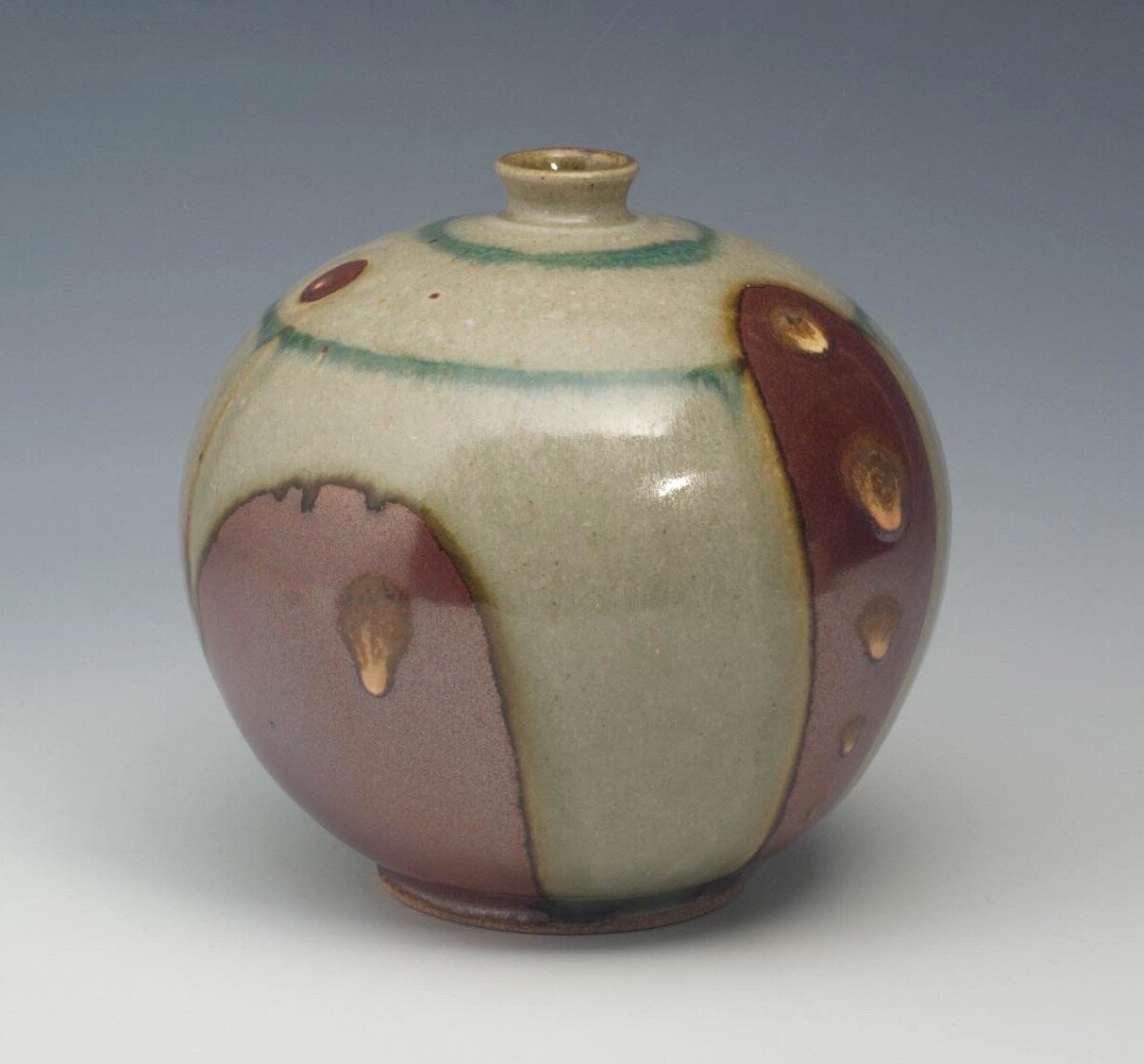

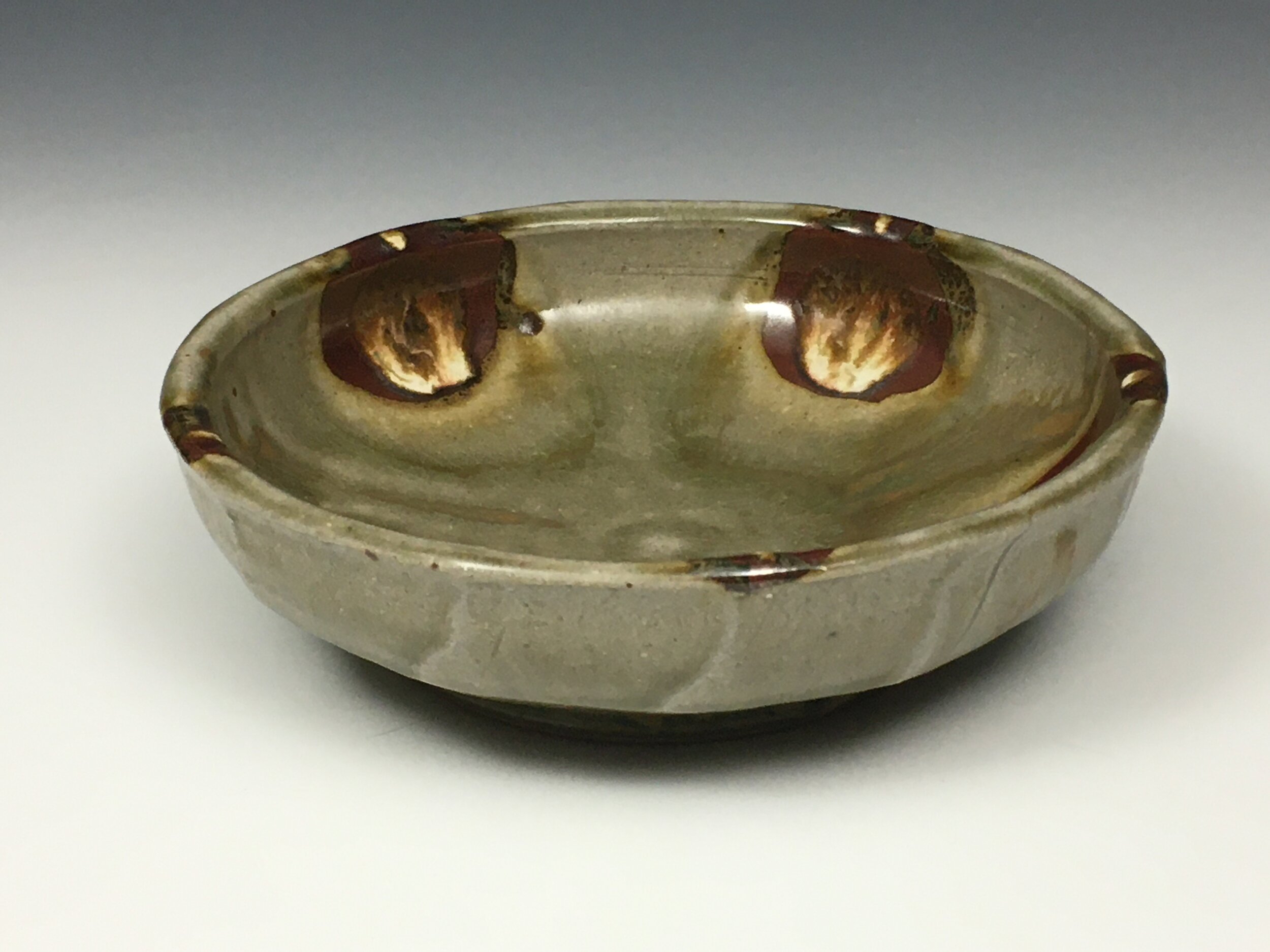
AAS: Fletcher, would you talk about your education? I know you are a graduate of East Carolina University and studied at the Penland School of Crafts.
FL: My parents are potters (Fox Pass Pottery, Hot Springs AR) so my pottery education definitely began at home, I learned basic throwing skills, clay and glaze mixing, glazing, and various other pottery studio practices. One of the most important things I learned was that being an artist was a viable option, but I also witnessed the challenges involved.
I began college at Henderson State University in Arkadelphia and decided to study graphic design, thinking graphic design combined artistic work with a clear career path. After two years I learned I wasn’t cut out for graphic design. I needed to use my hands to make things. I got interested in woodworking. A romantic interest was going East Carolina University and I discovered ECU had a wood design department, so I followed her there. I lived and worked in Greenville for a year, got in-state tuition, then enrolled. I thought it was terribly unfair when I found that many of my classes from HSU wouldn’t transfer. I had to redo two years of design and drawing classes. In retrospect this was a great help to me. It reinforced what HSU had already taught me and gave me a much stronger ability to critique my own work. Thinking it would be easy for me, I decided to take a ceramics class as an elective. To my surprise I found my relationship to clay was new and different than it had been as a teenager in my parents’ studio. I was hooked.
During that semester, ECU’s ceramic department hosted an international conference for woodfire potters. I was exposed to fantastic potters from all over the world, including many from North Carolina. Wood-fired pottery aesthetics, as well the outdoorsy wood chopping and burning work it involved, pushed all my buttons. I finished at ECU and the romantic interest fizzled. I moved back to Arkansas to work with my parents and eventually start my own studio. Education beyond my bachelor’s degree involved working in my parents’ studio, various workshops, and the slow evolution that happened by making lots of my own work. There were three workshops that were instrumental for my development. First was a week-long workshop at Appalachian Center for Craft with Josh DeWeese. The others were each two-month sessions at Penland School of Crafts. The first in 2008 with Michael Hunt, Naomi Dalglish and David Stuempfle. The second in 2011 was with Suze Lindsay and Kent Mclaughlin. I met my partner and fellow potter Beth Lambert in 2002. We have progressed together over the years and I learned a great deal from working with her. She had a wonderful experience spending a couple of summers working with Clary Illian in Ely, Iowa. I got an education vicariously through her time with Clary. I don’t think I can over emphasize the part Beth has played in my life.
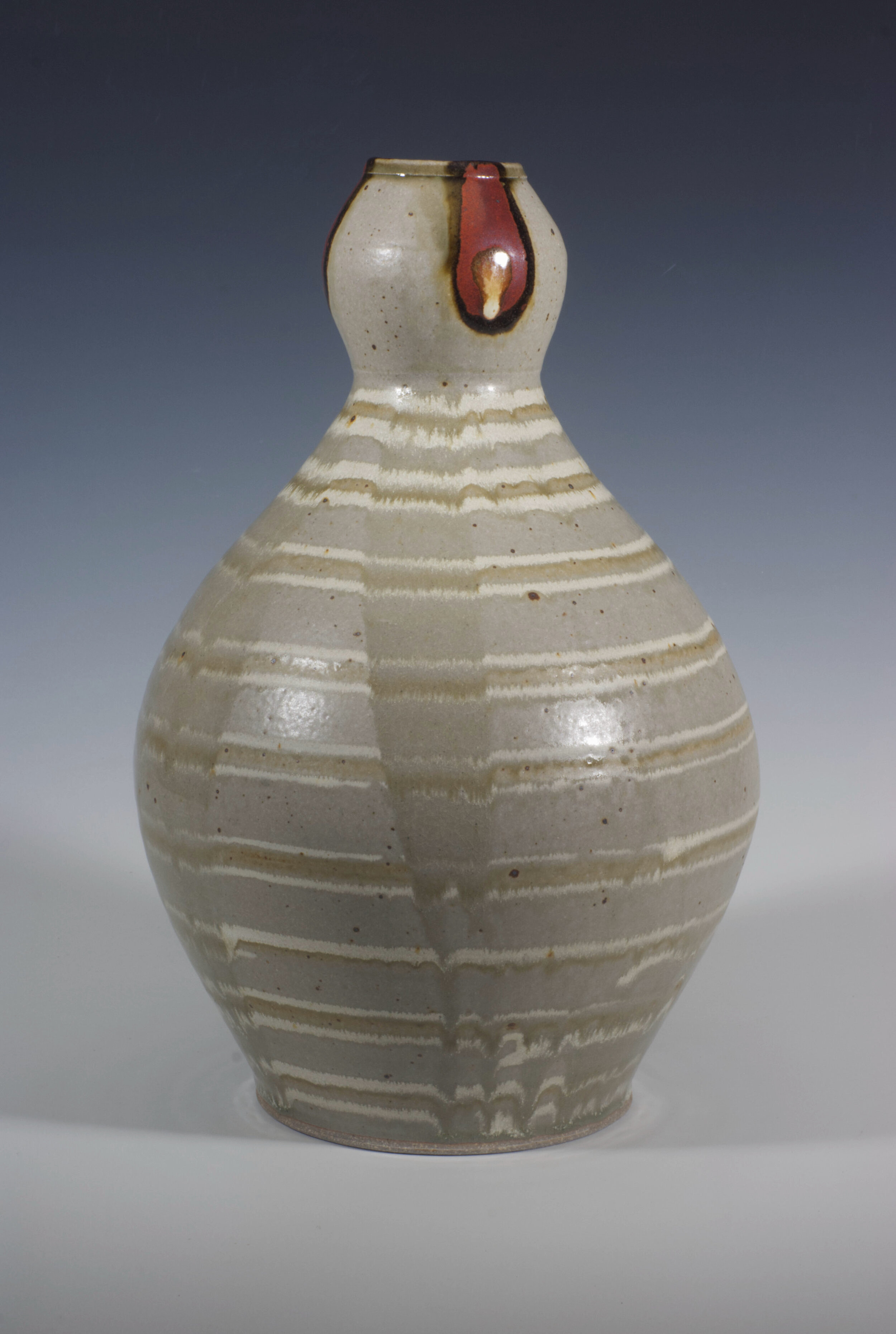
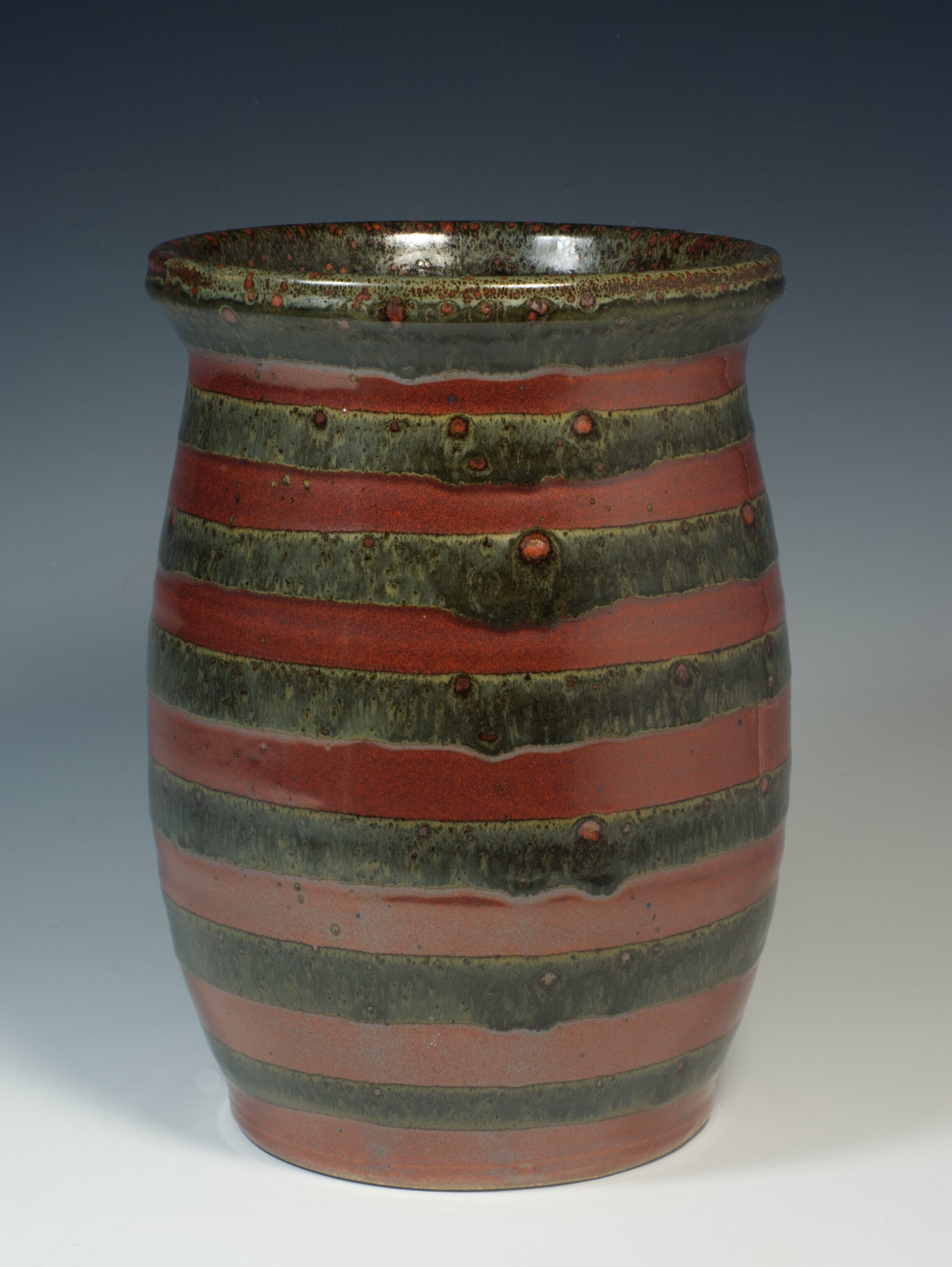

AAS: So, you grew up with parents who were potters. I remember, in my interview with Jason McCann who grew up with parents who were painters, him saying that he assumed everyone’s house smelled like paint thinner. What was it like for you growing up?
Fletcher, as a young boy, mixing glay in his parents’ studio.
FL: I can identify with Jason’s statement about the smell of paint thinner. My parents’ studio is connected to the house and most of their close friends are artists who have studios connected to their homes. Once after visiting a non-artist friend my sister asked in confusion, “where is your studio?” My parents were always home. They would often go back in the studio and work for a few more hours after dinner, but they were available. Mom and dad used to do several annual shows. War Eagle Craft Fair was the big one, also the Arkansas Craft Guild shows in Heber Springs and Mountain View. My sister and I spent many long weekends at these shows and had tons of fun. We helped with the set up and sales when we got old enough. It was a unique and happy childhood. I loved coming back home as an adult to work with my parents. Growing up surrounded by their pottery imprinted their aesthetic ideas on me. In some ways this rooted me and gave me a starting point, but I also struggled to find my own voice and develop work that felt like my own.
My father and I built a wood kiln the year I came home from college. He always liked the idea of a wood kiln but had never fired one. I had a little experience with wood firing from college and was obsessed with the idea. Working on this project contributed to moving us from a mentor/mentee to a peer type relationship. Early on I borrowed heavily from my father’s forms and glazes. Over time my own ideas evolved. I knew I was getting somewhere when I started seeing dad incorporating some of what I was doing into his work. My mother hand-builds all her work where my dad and I mostly work on the potter’s wheel. Her influence isn’t as obvious because of this, but it is there.
“Pots can become a meaningful part of people’s lives. Reaching for a particular mug every morning can function as part of an aesthetic ritual.”
Teapot, 5.5” x 5.75”, stoneware
AAS: Most of your work is functional as well as beautiful. Pieces like mugs or teapots are meant to be held and felt. Does this influence your designs?
FL: The way a pot functions and feels plays a big role in my work. My work is informed by pots, historical and contemporary, that I have used and seen. I hope the proportions in forms I throw, subtleties in my handles, and shapes of my spouts all contribute to what makes a pot recognizable as mine. Often, paying close attention to functional considerations leads to beauty. Perhaps our brains are wired to see that something is likely to function, so we perceive it as beautiful. I often add details that are purely aesthetic, they don’t make the piece physically function better but visually add to the perception of function. Making a pot beautiful makes it more inviting to be used. In this way aesthetic considerations are functional. Pots can become a meaningful part of people’s lives. Reaching for a particular mug every morning can function as part of an aesthetic ritual.
AAS: What I love about decorative pottery is their 3-dimensional beauty. Would you comment on that and on your pots, which have such a lovely shape?
Jar, 22” x 15”, stoneware
FL: Artists will often speak about learning to see. I have a friend who has spent a great deal of time in the forest as a hunter and wildlife/nature photographer. When I hike with him, he will see animals that I may or may not see even as he is trying to point them out to me. It’s obvious to me that while I may have learned to see and understand details in pottery forms that doesn’t mean I’ve developed wide ranging super-human observational skills. When I’m thinking about the form of a pot, I am comparing the proportions—height to the width, the diameter of the rim to the foot, if the pot has a belly does its apex occur low in the form or higher, maybe if the belly is high enough in the form it is more accurate to refer to it as shoulders. The foot and rim play a big role in what the pot’s form is communicating. A narrow foot can create a feeling of formality and delicacy where a broad foot might communicate stability and a casual feeling. A rim can bevel inward creating a shadow inside the pot, giving it a feeling of closing itself off. Or, depending on the shape and size of the belly, it might look like it’s taken a deep breath and is holding the air in. In contrast a rim that slopes outward can create a feeling that the pot is exhaling. I could go on; the point is that tiny subtleties in the form can completely change its emotional impact.
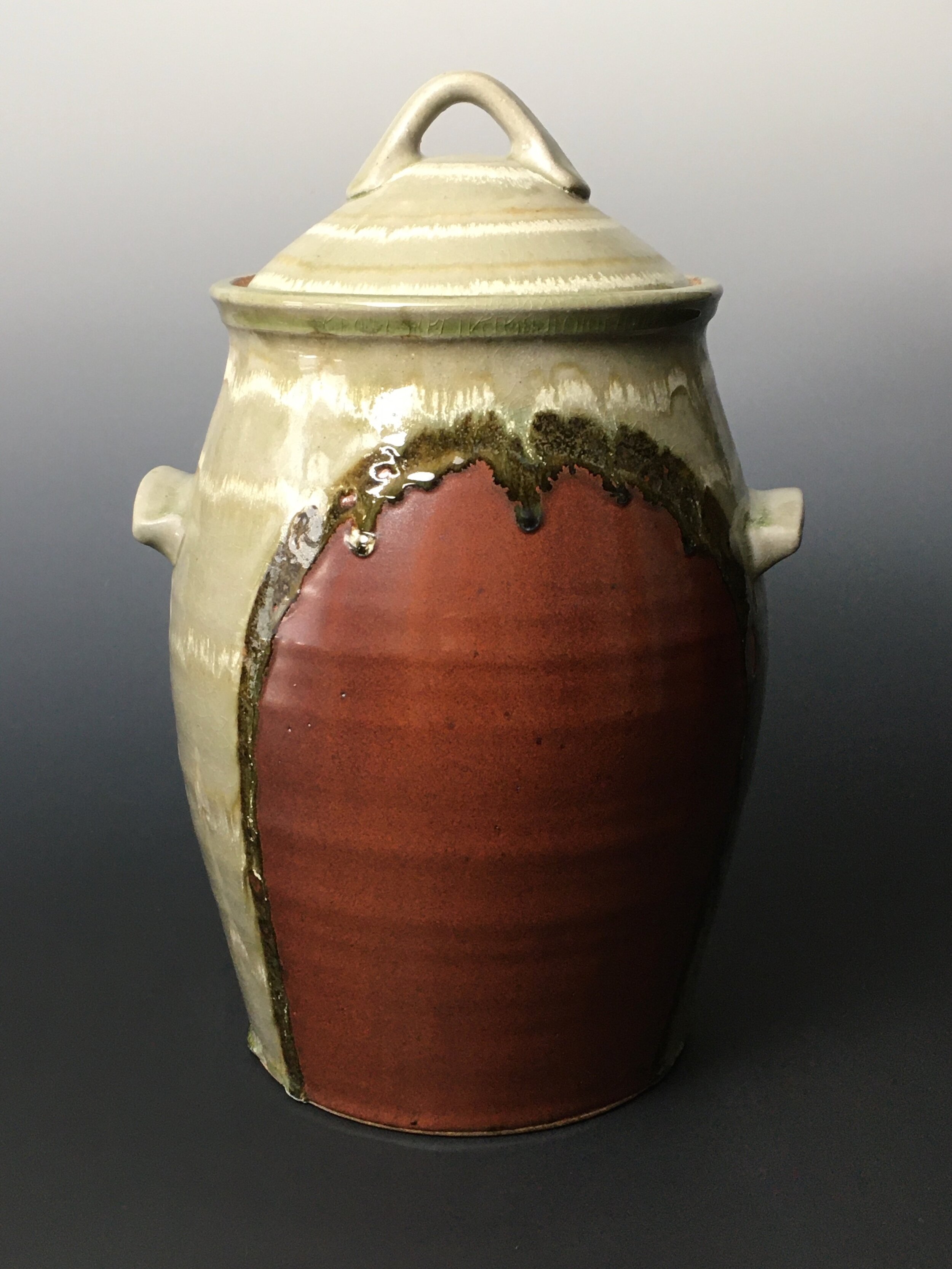
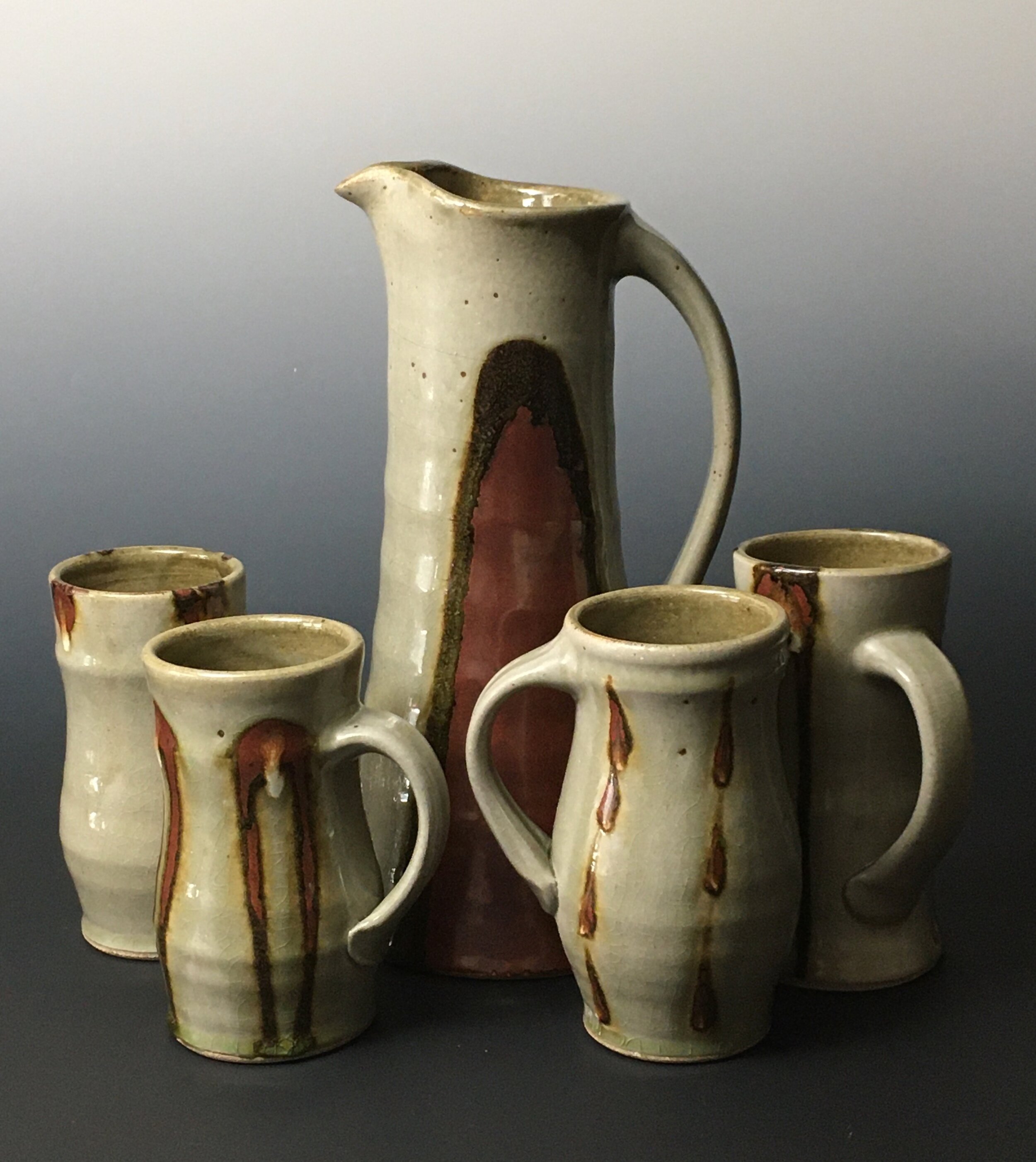

AAS: You use primarily stoneware rather than earthenware. Could you explain why you might choose one over the other?
FL: Stoneware and earthenware have different qualities. Visually, stoneware glazes tend to have a depth to them and the colors tend to be more muted; earthenware can achieve brighter colors. Stoneware vitrifies into a dense hard material that is mostly impervious to water; earthenware is a softer more open clay that will absorb water. I think either can be beautiful and I use both in my home. I think stoneware is a little more forgiving in daily use. It’s less likely to chip. I can heat a bowl of soup in the microwave without worrying about water it has absorbed turning into steam and breaking the pot. I can stick stoneware in the dishwasher with reckless abandonment. More than anything I think I’m just more familiar with stoneware, perhaps something will lead me to change one day but for now I’ve got more to explore in the realm of stoneware.
AAS: You helped introduce a wood fired kiln into your parents’ studio. I can imagine there is a lot of preparation and baby-sitting with this type of kiln. Are there advantages or disadvantages to using a wood fired kiln versus a gas kiln?
Pitcher, 12” x 6.5”, wood fired stoneware
FL: Wood firing is a lot of work. Our kiln holds on average about 300 pots. It burns for sixteen straight hours and uses about a cord of wood. Throughout the sixteen hours it needs to be stoked every few minutes and watched and tended between the stokes. It is exhausting work. In comparison, gas kilns are much easier to load, and fire. The burners are lit, occasional adjustments are made, and the gas company does the work. We fire our gas and wood kilns to about the same temperatures. So, we can use most of the same glazes in each kiln, but the effects can be very different. You don’t have to glaze the pots in the wood kiln, the ashes and combustion gasses created by burning wood will create a glaze on the pot for you. Our wood kiln has a fire box on one end and a chimney on the other, because of this the ash settles mostly on one side of the pot and less on the back side. This creates variations in the surface, which I like. The ash also has an effect on the glazes that I might apply to a pot. I’m less likely to be able to predict what a pot will look like out of the wood kiln, but overall, it is more likely to be interesting to me. Firing the wood kiln makes you feel connected to the process. The kiln gains momentum throughout the day and it feels as if it inhales as you stoke the firebox and exhales as the wood burns. You can hear the air and fire driving through the kiln. It is a beautiful process. All that said, I am really enjoy the pots I’m getting from my gas kiln lately. I am glazing them in ways that wouldn’t really work in a wood firing.
Plate, 10” dia, stoneware
AAS: You use some beautiful glazes – I especially like the reds. Do you make your own glazes?
FL: I do mix my own glazes. Some are recipes I’ve developed, and some have been shared and passed around among potters. The red glaze is an iron red, meaning it uses iron oxide to achieve the red color. It’s a glaze recipe I got from my father. I’m not sure where he got it or who developed it. I use several local materials. The most interesting material I use is from south of Little Rock at Granite Mountain. People in the construction industry around Little Rock would know it as Donna Fill. By itself it melts to a metallic brown color glaze, I use it as decoration layered on top of other glazes or as an ingredient in glaze formulas.
Vase, 9.5” x 3”, stoneware
AAS: On of my favorite pieces is this vase. I love the subtle colorations, which really complement the shape.
FL: This vase came out of my most recent firing. It’s a new glaze combination for me and I am excited to try it again. I faceted the sides of the vase while the clay was still soft. I threw the vase with extra thick walls, let it stiffen for a few hours, then I used a wire type cheese slicer to cut the sides into an octagon shape. Later I applied a white liquid clay called slip to the surface, the slip is designed to develop little decorative cracks in the surface as it dries. I then applied a glaze over the slip. I’ve used this combination for years, but added a couple of lines of green glaze, the green line melted into streaks. I was happy with the interest the green added to the stark white background. I don’t think this shape needs a lot of glaze decoration. The faceted sides in the form already make strong vertical lines that act as a surface decoration, when it contains flowers, they become part of the form. In my mind this vase could look like a stem or stalk the flowers grow from.
AAS: While making pottery is labor intensive, I imagine it can be meditative also. What do you get out making pottery?
Wood fired kiln at Fox Pass Pottery.
FL: Sometimes making pottery is meditative, other times it’s a job like any other. It can be very satisfying when I feel like I’m present and building on what I’ve done before. As you would imagine, opening a kiln after a firing that comes out especially good can feel like Christmas morning. I do get cranky if I go for too long without working in the studio. After about four or five days on vacation, I often start itching to get home and back to work. I am sometimes reminded that the pottery my family and I make for a living isn’t all that common. We have customers who proudly bring visiting friends and family to the shop to see our pots. For many people I think we serve to enrich the community and that feels good. My parents opened Fox Pass Pottery almost forty-eight years ago. They have customers whose children grew up and started collecting Fox Pass pots and now the grandchildren are grown and buying pots. There are local Arkansans who have supported me by buying pots and paying attention to my development going back to when I moved home to Arkansas in 2001. It feels good to think how many people are invested in my work and life. I moved to Little Rock in 2006 and set up a studio here, despite not having my own sales shop here I have enjoyed the support of Little Rock people. I recently began selling pots at Art Group Gallery in Little Rock, which has only added to the sense of community and support related to my work.
AAS: Do you offer pottery classes?
FL: I normally teach pottery at Windgate Art School at the Arkansas Museum of Fine Arts, formerly the Arkansas Arts Center Museum School. I haven’t had any in person classes for nearly a year due to the coronavirus. I’m not sure when my class will begin again, but I’m looking forward to it. They are teaching some online classes, but my in-person classes will have to wait.


